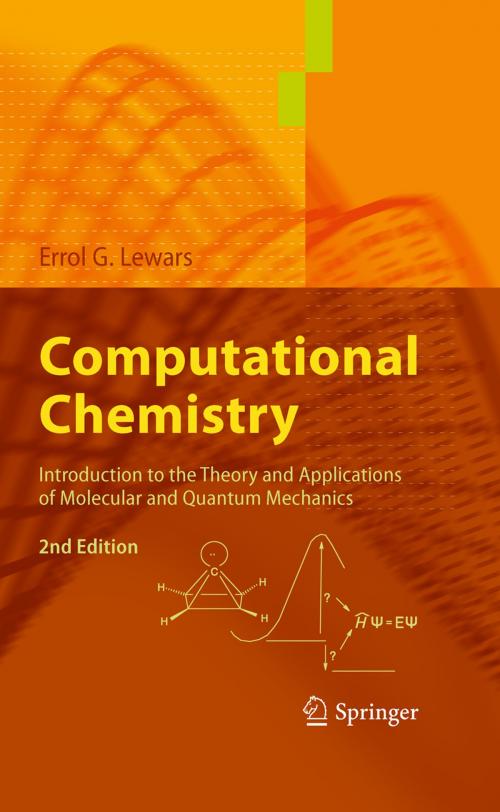Computational Chemistry
Introduction to the Theory and Applications of Molecular and Quantum Mechanics
Nonfiction, Science & Nature, Science, Chemistry, Physical & Theoretical, General Chemistry| Author: | Errol G. Lewars | ISBN: | 9789048138623 |
| Publisher: | Springer Netherlands | Publication: | November 9, 2010 |
| Imprint: | Springer | Language: | English |
| Author: | Errol G. Lewars |
| ISBN: | 9789048138623 |
| Publisher: | Springer Netherlands |
| Publication: | November 9, 2010 |
| Imprint: | Springer |
| Language: | English |
This corrected second edition contains new material which includes solvent effects, the treatment of singlet diradicals, and the fundamentals of computaional chemistry.
"Computational Chemistry: Introduction to the Theory and Applications of Molecular and Quantum Mechanics" is an invaluable tool for teaching and researchers alike. The book provides an overview of the field, explains the basic underlying theory at a meaningful level that is not beyond beginners, and it gives numerous comparisons of different methods with one another and with experiment.
The following concepts are illustrated and their possibilities and limitations are given:
- potential energy surfaces;
- simple and extended Hueckel methods;
- ab initio, AM1 and related semiempirical methods;
- density functional theory (DFT).
Topics are placed in a historical context, adding interest to them and removing much of their apparently arbitrary aspect. The large number of references, to all significant topics mentioned, should make this book useful not only to undergraduates but also to graduate students and academic and industrial researchers.
This corrected second edition contains new material which includes solvent effects, the treatment of singlet diradicals, and the fundamentals of computaional chemistry.
"Computational Chemistry: Introduction to the Theory and Applications of Molecular and Quantum Mechanics" is an invaluable tool for teaching and researchers alike. The book provides an overview of the field, explains the basic underlying theory at a meaningful level that is not beyond beginners, and it gives numerous comparisons of different methods with one another and with experiment.
The following concepts are illustrated and their possibilities and limitations are given:
- potential energy surfaces;
- simple and extended Hueckel methods;
- ab initio, AM1 and related semiempirical methods;
- density functional theory (DFT).
Topics are placed in a historical context, adding interest to them and removing much of their apparently arbitrary aspect. The large number of references, to all significant topics mentioned, should make this book useful not only to undergraduates but also to graduate students and academic and industrial researchers.















